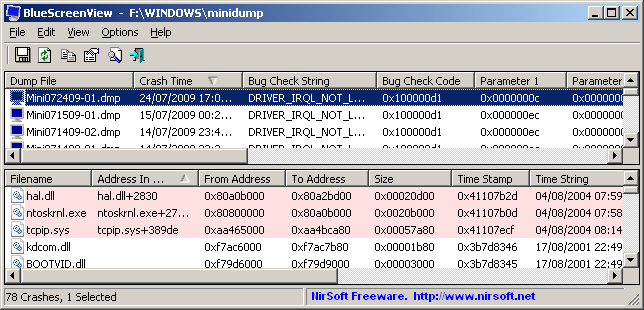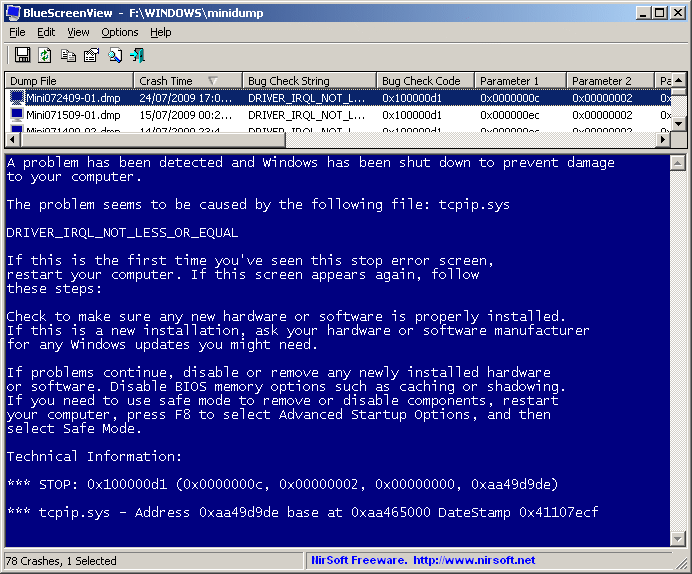What operating system do I have? I stumbled across this dilemma when I needed to download
a free file from the Microsoft website and was presented with two
choices for my download. I could download the file in 32 bit version or
64 bit version, depending on which one suited my operating system.
But the question remained, what operating system do I have? You really need to know if you have Windows XP home, Windows XP Professional, Windows Vista Home, Premium, Ultimate, or Business? The list goes on. Maybe you have Windows Seven. Also the average user has no idea what the difference is between a 32 bit operating system and a 64 bit so I will show you how to find out which one is running on your computer.
Lets start with some computer basics:
1. Go to your start menu. This will apply for all Windows Versions.
2. Click on control panel in the menu.
3. Double click on the system icon. If you cannot see all the pretty icons press on the link to view the control panel in classic view.
4. You will see all the details in front of you. See the screen shot below. Click on the picture to see a larger size. Here you can see what operating system you have.
The above screen shot shows Windows vista and the below shot is Windows XP. It looks different but the information result is the same. They both tell you what operating you have.
The information I can see here is:
If it says x86 then you have a 32 bit operating system. If the processor area mentioned a 64 or AMD64 then this means you have a 64 bit processor. If it said Microsoft Windows XP Professional x64 Edition Version then this means it is a 64 bit operating system. However as you can see from above, it says Microsoft Windows XP Professional and the processor starts with X86 so therefore this is a 32 bit processor with a 32 bit operating system.
The screen shot above shows a 64 bit operating system which means I also have a 64 bit processor to allow this.
Bargain: If you find that you do have a 64 bit processor check out this Windows Seven operating system for under $100!
Windows 7 Home Premium 64 Bit
What operating system do I have? Another way to see if you have a 32 bit or a 64 bit operating system
1. Go to control panel by going to the start menu in the bottom left corner.
2. Click on the system icon.
3. The information will be there.
4. See in the screen shot below I have a 32-bit Operating system.
On my laptop I have a 64 bit Operating system installed because the laptop has a 64-bit processor.
S.G.Godwin Dinesh.MCA
Sr.System Administrator
But the question remained, what operating system do I have? You really need to know if you have Windows XP home, Windows XP Professional, Windows Vista Home, Premium, Ultimate, or Business? The list goes on. Maybe you have Windows Seven. Also the average user has no idea what the difference is between a 32 bit operating system and a 64 bit so I will show you how to find out which one is running on your computer.
Lets start with some computer basics:
What is a processor?
The processor is a main component of a computer that is attached to the mother board. It is technically called the Central processing Unit or CPU for short. It is the brain of the computer because it processes all of the information and data. The bigger your processor, the faster your computer performs your tasks. If you have a 64 bit processor it would probably be reasonably fast as this is a new technology. We have also mentioned components of a computer in a basic computer terminology article.What is an Operating system?
An operating system is the software you install on your computer that allows you to operate the computer. Windows is an operating system. If you want to find out what operating system you have then this is very simple. You need to know what operating system you have on your computer so you can download the right drivers and software that is compatible.What Operating system do I have?
If you are wondering if you have Windows XP, Windows Vista, or Windows Seven, it’s very easy to find out. If you are wondering if your computer is a 32bit or 64bit then read on further down the page. People often ask me “what operating system do I have?” I would have thought this was a well known computer basics thing to know, however many do not know the answer. The average computer user does not work with all versions of Windows as much as I do so how can I expect them to know?1. Go to your start menu. This will apply for all Windows Versions.
2. Click on control panel in the menu.
3. Double click on the system icon. If you cannot see all the pretty icons press on the link to view the control panel in classic view.
4. You will see all the details in front of you. See the screen shot below. Click on the picture to see a larger size. Here you can see what operating system you have.
The above screen shot shows Windows vista and the below shot is Windows XP. It looks different but the information result is the same. They both tell you what operating you have.
The information I can see here is:
- What operating system I have and what version and service pack.
- How much computer memory I have.
- What processor I have.
- What speed the processor is.
- If I have a 32bit or 64bit processor. (Sometimes it is not shown on an old computer)
What Operating system do I have and is it 32bit or 64 bit?
A 64 bit operating system is an operating system such as Windows XP or Windows Vista, that has been purposely developed for a computer with a 64 bit processor. You cannot use 64 bit software on a computer with a 32 bit processor but you can use 32 bit software with a 64 bit processor.What operating system do I have and is 32 bit or 64 bit?
Windows XP- Go to the start menu.
- Choose all programs.

- Then choose accessories, then system tools.
- Now choose system information.
- See the screen shot below.
If it says x86 then you have a 32 bit operating system. If the processor area mentioned a 64 or AMD64 then this means you have a 64 bit processor. If it said Microsoft Windows XP Professional x64 Edition Version then this means it is a 64 bit operating system. However as you can see from above, it says Microsoft Windows XP Professional and the processor starts with X86 so therefore this is a 32 bit processor with a 32 bit operating system.
The screen shot above shows a 64 bit operating system which means I also have a 64 bit processor to allow this.
Windows Vista
In Windows Vista you can find out the same way. Start menu>Programs>Accessories>System tools>System information. You can also type the word system into the search bar in the start menu.Bargain: If you find that you do have a 64 bit processor check out this Windows Seven operating system for under $100!
Windows 7 Home Premium 64 Bit
What operating system do I have? Another way to see if you have a 32 bit or a 64 bit operating system
1. Go to control panel by going to the start menu in the bottom left corner.2. Click on the system icon.
3. The information will be there.
4. See in the screen shot below I have a 32-bit Operating system.
On my laptop I have a 64 bit Operating system installed because the laptop has a 64-bit processor.
What are the advantages and disadvantages of having a 64 bit system?
- You will need to install 64-bit drivers for all your add ons like your printer, usb stick, digital camera, and more. This is why people have had problems with having a 64 bit system. However as time goes on the technology gets better and more refined… Soon drivers will be available for most devices.
- If you have a 64 bit processor and a 64 bit operating system you will have to have 64-bit software applications like office programs, picture editors, and so on..
- There is not much compatible software available at the moment, however this is changing.
- A Vista 64 bit operating system does not support any 32 bit software.
- An AMD 64 bit processor supports both 32 bit and 64 bit operating systems.
- Vista 64 bit operating system has major improvements on security features and kicks the 32 bit butt. New features that prevent and almost make system attacks impossible.
- Vista Home Basic 64 bit supports up to 8 GB of RAM, Vista Home Premium 64 bit supports up to 16 GB and Vista Business, Enterprise, and Ultimate 64 bit supports up to 128 GB, whereas 32 bit Vista supports 4 GB or RAM.
- A 64-bit processor is made with more advanced processes, have more features, and of course has faster speeds.
Notes: 32 bit and 64 bit operating system
- You can upgrade from XP 64-bit to Vista 64-bit, but not from Vista 32-bit to Vista 64-bit.
- If you are running a 64 bit operating system then we must presume you have a 64 bit processor as well.
- You can also type winmsd.exe into the run box for the system information box to come up.
- You can also press The WIN KEY and pause break to open system properties. Sometimes the information is there.
- Now that you know if you have a 32bit or 64 bit system, find out more information about your computer.
S.G.Godwin Dinesh.MCA
Sr.System Administrator



























